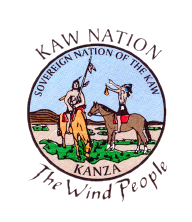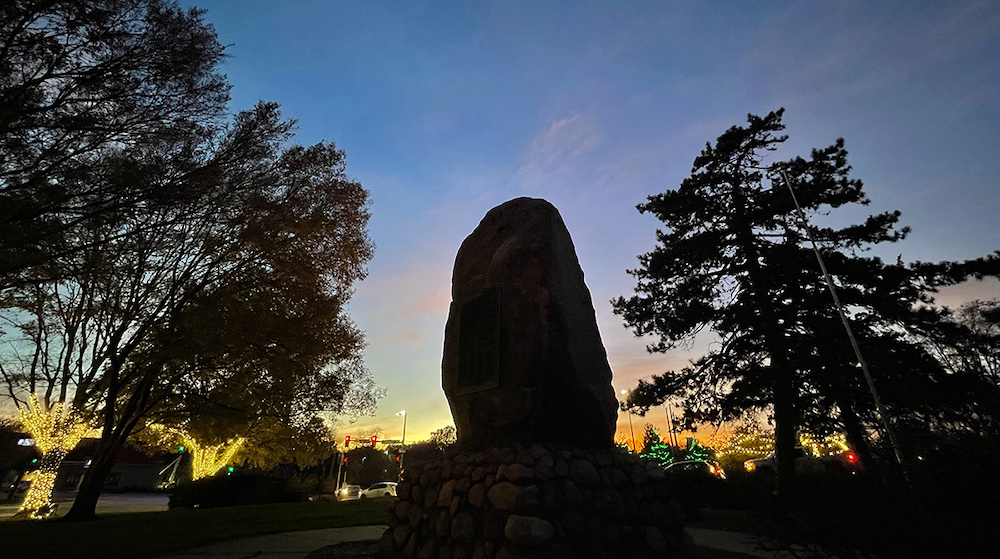Project Overview
Kansas without the Kanza:
Understanding How the Kanza Homeland Became K-State
Land Acknowlegements
K-State’s Indigenous Land Acknowledgement was created by the Indigenous Faculty Staff Alliance in January 2020.
Occupying Indigenous Land:
Kansa(s) Perspectives about Land Acknowledgements
Listen to a panel discussion with Charlee Huffman (Kaw Nation citizen), James Pepper Henry (Vice-chair of the Kaw Nation), and Chester Hubbard (K-State student and Prairie Band Potawatomi citizen) about land acknowledgements and #landback sponsored by the School of Music, Theater, and Dance, the IDEALL committee, and the Indigenous Faculty and Staff Alliance.

Occupying Indigenous Land: Recognizing K-State's History Through Land Acknowledgement
Listen to a panel discussion with Alex Red Corn (Osage Nation citizen), Lisa Tatonetti (settler scholar) about land acknowledgements sponsored by the School of Music, Theater, and Dance, the IDEALL committee, and the Indigenous Faculty and Staff alliance
![]()
The Land Acknowledgement Toolkit was created by the Kansas Association of Native American Education. This toolkit offers terminology, resources (including a list of past and present Indigenous nations in Kansas), and best practices for thinking about land acknowledgements and more. ![]()
Land-Grab Universities is a detailed database on land “grants.” This website shows Indigenous land ceded to land grant universities by treaty and tribal nation.![]()
Laura Ingalls Wilder once said, "Home is the nicest word there is." However, what if your town or home is no longer there? Explore hidden places in the Flint Hills and tell us all about what 'Going Home' means to you.
Kanza/Kaw Nation History and Culture
The Kaw Nation Website includes a wealth of cultural, historic, and linguistic information.
Between a Rock and a Hard Place: Information, videos, and language curriculum about Iⁿ‘zhúje‘waxóbe, the Kaw Sacred Red Rock currently situated in Lawrence, Kansas: https://www.robinsonpark1929.com/

Click the link below to read about the In ‘zhúje ‘waxóbe/ Sacred Red Rock Project which will move the sacred stone, In ‘zhúje ‘waxóbe, to Allegawaho Memorial Heritage Park near Council Grove as a way to acknowledge the harm done by colonial theft and appropriation:
https://www.sacredredrock.com/
![]()
“Visit to Blue Earth Village,” Lauren W. Ritterbush. Kansas History, 38(1). http://www.kshs.org/publicat/history/2015spring_ritterbush.pdf
This is an excellent article that shares the story of the Kanza’s Blue Earth Village, which was located about two miles east of present-day Manhattan, Kansas. “This article provides a glimpse of Kanza life through the eyes of others, particularly a party of the Long Expedition of 1819.”
Sovereignty
Native Governance Center the center offers video resources, blogs, and articles by contemporary Indigenous people about Indigenous political issues.
https://nativegov.org/resources/
Oklahoma State University Libraries, Treaty Database
https://treaties.okstate.edu/treaties/
Oklahoma State University Libraries, Digital Collections has digitized Charles J. Kappler, Indian Affairs: Laws and Treaties. Volume 2 (Treaties) will likely be the most useful for land acknowledgement work
https://dc.library.okstate.edu/digital/collection/kapplers
National Archives Resources on American Indian Treaties:
https://www.archives.gov/research/native-americans/treaties
Educator Resources
National Museum of the American Indian Smithsonian’s Native Knowledge 360
Native Knowledge 360° (NK360°) provides educators and students with new perspectives on Native American history and cultures. Most Americans have only been exposed to part of the story, as told from a single perspective through the lenses of popular media and textbooks. NK360° provides educational materials, virtual student programs, and teacher training that incorporate Native narratives, more comprehensive histories, and accurate information to enlighten and inform teaching and learning about Native America. NK360° challenges common assumptions about Native peoples and offers a view that includes not only the past but also the vibrancy of Native peoples and cultures today.
https://americanindian.si.edu/nk360
Kansas Association of Native American Education
https://coe.k-state.edu/collaborations/partnerships/kanae/
Kansas State Historical Society, “American Indian History” The KSHS site links to guides of the KSHS collections on American Indians
https://www.kshs.org/p/research-american-indian-history/17526
Tribal Legacy Project This Lewis and Clark National Historic Trail Tribal Legacy Project archive contains hundreds of hours of videos, imagery, and stories
https://lc-triballegacy.org/wp/
Evergreen College Native Case Studies Searchable, multi-discipline array of contemporary case studies with teaching notes and activities. Can be searched by academic discipline, theme, or tribe.
https://nativecases.evergreen.edu/collection/a-z
Indian Land Tenure Foundation’s Lessons for Our Land (pre K- secondary)
“The nonprofit Indian Land Tenure Foundation (ILTF) teaches the Native American story of this land from historical to modern times. The ILTF developed the curriculum to provide both Native and non-Native students with broader insight and understanding of land, cultures, inherent rights, and tribal sovereignty.”
https://www.lessonsofourland.org/